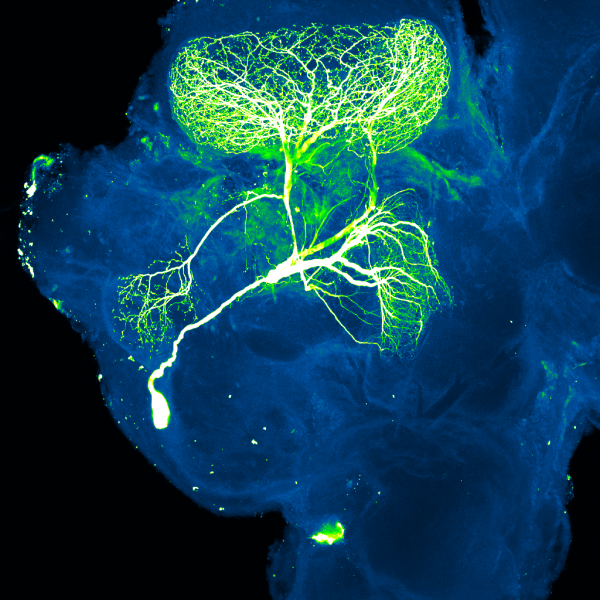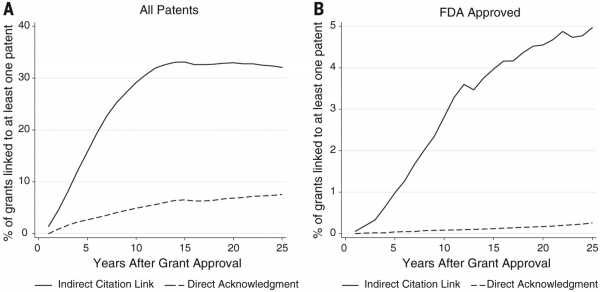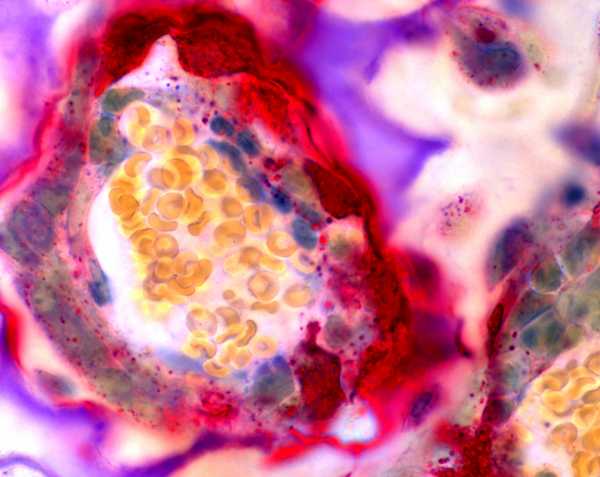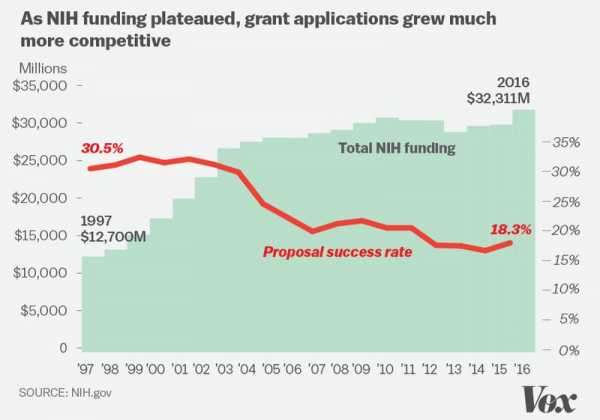
The Trump administration’s 2020 budget proposal is out, and one thing is obvious: The administration doesn’t think spending at the National Institutes of Health is a very good deal.
The budget suggests cutting $4.5 billion, around 11 percent of the agency’s 2019 budget. We should say that estimates of the total cut reported by different news outlets range from $4.5 billion to $6 billion. Some of the stated figures in the budget document might be wrong. “The most defensible number … might be -$4.9 billion,” Matthew Hourihan, R&D budget analysis director at the American Association for the Advancement of Science, says in an email. But he’s still figuring it out. In any case, it’s a lot of money.
Congress will have to approve the budget, and that is not a given. Recall that in 2017, President Trump asked the Republican-controlled Congress to slash $7 billion from the NIH over two years. Instead, Congress opted to increase the agency’s budget by $2 billion. Now that Democrats control the House of Representatives, a $4.5 billion cut seems even less likely.
The president’s budget request isn’t law but instead gives the public a sense of where the White House’s priorities lie. This year, they are not with funding scientific research. The budget also contains a $1 billion cut to the National Science Foundation, as Science reports.
In the past, the White House has justified cuts to the NIH by implying it engages in wasteful spending. “Only in Washington do you literally judge the success of something by how much money you throw at the problem, not actually whether it’s solving the problem or coming up with anything,” then-press secretary Sean Spicer said in 2017.
But we can judge the success of the NIH by measures other than the amount of money being spent there. For decades, scientists have been studying a version of this precise question: “What does public spending on biomedical research actually buy us?”
A lot, it turns out. So let’s run through some of the evidence.
Here’s what money spent at the NIH “buys” us. Spoiler: It’s good stuff.

The NIH isn’t just a research campus in Bethesda, Maryland. It’s the major funder of biomedical research in universities across the country. Around 80 percent of the NIH budget goes to these grants.
Turns out giving money to some of the nation’s smartest people to answer tough problems in medicine and biology generates some good products and ideas, and stimulates the economy.
1) New patents for drugs, medical devices, and other technologies
In 2017, Science published a study looking at the impact of NIH grants over a 27-year period.
The main finding: 8.4 percent of all NIH grants go on to generate patents — for new drugs, medical devices, or other medicine-related technologies.
The authors of the Science paper had previously figured out that “a $10 million boost in NIH funding leads to a net increase of 2.3 patents.” They estimate, roughly, that each patent is worth around $11.2 million in 2010 dollars. “A back-of-the-envelope calculation indicate[s] that a $10 million dollar increase in NIH funding would yield $34.7 million in firm market value,” they reported in an NBER paper. Not a bad bet.
One single invention can make for a huge advancement in biotechnology. The NIH’s most cited patent since 2000 was for a tiny and incredibly important invention: microscopic valves that allow scientists to create “circuits” of fluid that work kind of like computer chips. According to Battelle, a private research firm, the NIH spent about $500,000 developing these valves. Since then, biotech companies have seized on the invention, creating even smaller versions of chemistry labs that can diagnose diseases like HIV and Ebola (these are sometimes referred to as “lab on a chip” devices). It’s an invention that has spurred a whole new biotech industry and helps save lives.
2) Those patents then inspire new patents
The Science paper’s secondary finding is perhaps just as important: Grant money also has a carryover effect into the private sector. Around 30 percent of all scientific papers generated by NIH grants are cited by successful patent applications from private firms.
Which means even if a grant isn’t directly generating a patent, it has a good chance of aiding the thinking behind the discovery of another.
And there’s some research that suggests government funding is better at kickstarting this virtuous cycle than private sector funding: NIH-funded patents are cited by future patents at double the rate of those developed by the private sectors, a 2014 Nature Biotechnology paper found.
Furthermore, the Science analysis finds that both “basic” and “applied” research are just as likely to be cited by future patents. (“Basic” research seeks to understand the nuts and bolts of biological processes. It answers questions like: How does the retina work? “Applied” research seeks to generate ideas or products that can be put to use: Can this medical device improve retina functioning?)
That there’s parity between basic and applied research means that generating knowledge for the sake of it is just as valuable as designing direct solutions to problems.

Between 2003 and 2013, every patent generated by an NIH grant was cited, on average, by five future patents, according to Battelle.
Again, this means research dollars spent by the NIH inspire other research institutions and industries to spend money on research and development, generating ideas to change and save lives.
Overall, Battelle calculated that every $100 million spent on NIH research leads to an additional $105.9 million in future research and development in both the public and private sectors.
3) Those patents form the basis of new biotech firms
NIH money lands in research institutions all across the country. In 2014, a report in the journal Research Policy asked: What happens to local economies that see that influx of NIH funds?
Quite simply, where NIH funds flow, new biotechnology firms follow. “A $1 million increase in the average amount of federal R&D funding associates with an increase of 5–58 percent in the number of local biotechnology firm births a few years later,” the authors reported.
In 2013, the Science Coalition, a science advocacy nonprofit, published a report on 100 companies that got their start because of federal research funds. Most of them are pretty small — employing a few or a few dozen people. They produce things like custom strands of DNA for use in genetic engineering, or compounds to make pharmaceuticals more water-soluble.
NIH-funded research has also spurred gigantic new industries. Consider the human genome project, to which genetic testing companies like 23andMe, and the entire genomics industry, owe their existence. The human genome project cost around $3.8 billion. It’s estimated to have generated $796 billion in economic impact.
4) All this research gives us drugs that save lives
In 2011, the New England Journal of Medicine published a report that found public sector funding is more effective at generating new, important drugs than spending in the private sector.
Looking at decades of Food and Drug Administration drug approvals, the researchers found “virtually all the important, innovative vaccines that have been introduced during the past 25 years have been created by PSRIs [public sector research institutions].”
Their definition of PSRI includes “all universities, research hospitals, nonprofit research institutes, and federal laboratories in the United States,” so it’s not just spending by the NIH.
The FDA prioritizes drugs in the approval pipeline based on potential impact. Drugs that began at public research institutions were more than two times more likely to be flagged as high-priority than those that began in the private sector. The analysis found that “46.2 percent of new-drug applications from PSRIs received priority reviews, as compared with 20.0 percent of applications that were based purely on private-sector research, an increase by a factor of 2.3.”
And the public sector is particularly good at creating drugs to cure deadly diseases. Of the 153 approvals of drugs that began at public research institutions, 40 were for the treatment of cancer and 36 tackled infectious diseases, the report found.
Specifically, research also finds that spending at the NIH does spur new drug discoveries. A 2012 study found that a 10 percent increase in the funding for a particular disease “yields about a 4.5 percent increase in novel drugs entering human clinical testing (phase I trials), after a lag of up to 12 years.”
Here’s a famous example: In the 1950s and ’60s, NIH researcher Julius Axelrod’s work showed how neurotransmitters function in the brain, leading to a Nobel Prize. But more importantly, his ideas led to the drugs we now use to treat depression. “All the major SSRIs [selective serotonin reuptake inhibitors] were discovered by pharmaceutical companies with the use of Axelrod’s basic discoveries,” NEJM reports.
Could the NIH benefit from some cost-cutting? Maybe.

In the past, the White House has argued that spending at the NIH has gotten out of hand.
“About 30 percent of the grant money that goes out is used for indirect expenses, which, as you know, means that that money goes for something other than the research that’s being done,” then-Health and Human Services Secretary Tom Price told reporters in 2017, justifying the proposed 18 percent cut to NIH funding for the 2018 budget.
It’s true that the NIH funding also covers overhead costs like electricity bills and lab equipment. And yes, there are legitimate concerns that these costs can spiral. Stat News has the best explanation of this argument here. In the piece, reporter Meghana Keshavan explains:
Should universities like Harvard, which have billion-dollar endowments, get federally funded money to keep the lights on?
The Government Accountability Office — which analyzes government policies for inefficiencies — flagged the potential for sprawling overhead costs at the NIH in a 2016 report, urging the institute to establish programs to better investigate potential fraud and abuse.
So there’s some legitimate debate to be had about funding at the NIH. But it’s also clear that the severe, sudden cuts proposed by the Trump administration will have the immediate effect of stifling scientific progress.
For one, science need stable funding. Projects are funded on a multi-year basis. Yet Congress can change the NIH budget every year if it wants. The instability makes it harder to fund multi-year projects.
Cuts to the NIH will likely face opposition
And already, competition for NIH grants is intense. Funding has basically plateaued over the past decade, while at the same time the cost of research keeps increasing and an ever-growing pool of PhDs is competing for a relatively smaller pile of grant money.
Consider this: In 2000, more than 30 percent of NIH grant applications got approved. Today, it’s closer to 17 percent. It’s not crazy math: The less money there is to go around, the fewer projects get funded. If the Trump cuts go through, it’ll likely mean hundreds fewer research grants.

Congress will ultimately decide whether to adopt Trump’s budget into law.
Again, it’s likely these cuts will not pass.
But if Congress does vote to cut NIH funding — which could very well happen — who knows what ideas and breakthroughs we’ll miss out on?
(Many thanks to Matthew Hourihan, R&D budget analysis director at the American Association for the Advancement of Science, who helped compile this research.)
Sourse: vox.com






